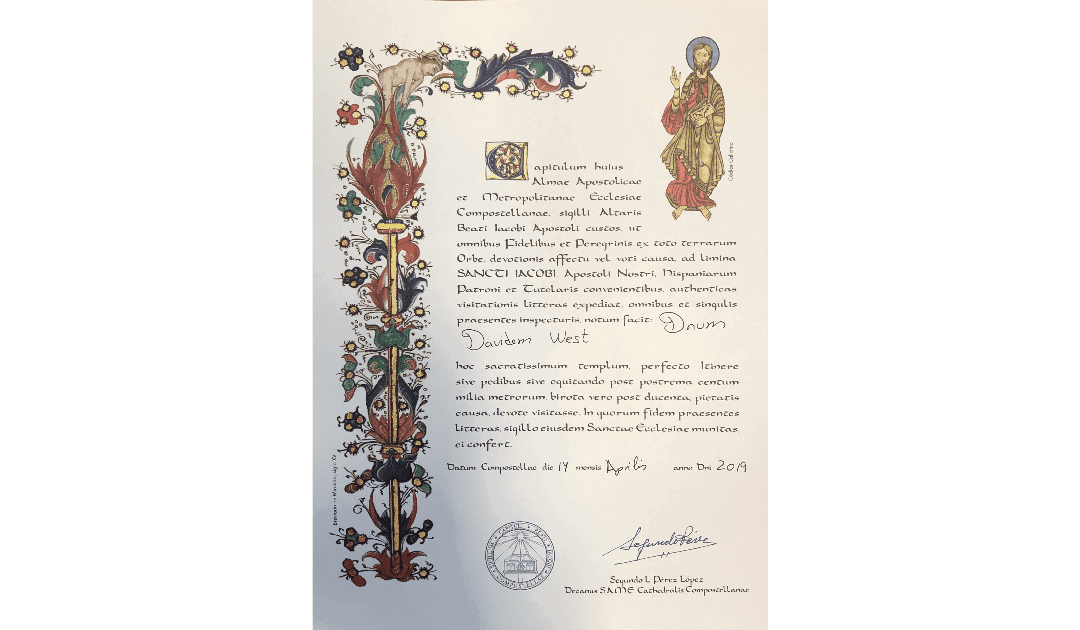I’m a pilgrim, as the certificate confirms. I walked the Camino de Santiago in 2019. I hope with all my heart that peace may be found in the Middle East, and found soon. I hope for peace for Jews, Palestinians, and all those who live in and visit the region, whether as tourists, on business, or pilgrims. One day I’d like to visit Jerusalem.
On 11th November 725 A.D. Willibald arrived in Jerusalem. He was the first Englishman to visit the Holy Land. His father was Richard the Pilgrim. They were from Wessex, which is where I live. Willibald was severely ill when he was three. His parents prayed that he would be dedicated to a monastic life if he were spared. He survived, so at the age of five Willibald was enrolled in the monastery of Waldheim, which is now Bishops Waltham, at the source of the River Hamble.
In 721 Willibald, his father Richard, and his brother Winibald set sail from the Hamble to Rouen on pilgrimage to Rome. Sadly Richard died in Lucca, Northern Italy. Willibald and Winibald continued to Rome, where they both contracted either the black plague, or malaria. They survived and with two companions continued the pilgrim life. They made their way via Naples, Sicily, Greece, Ephesus and Cyprus to Palestine. Their pilgrimage then took them from Nazareth, Bethlehem and Egypt back to Nazareth, then onwards to Cana and Jerusalem. Our pilgrims continued via Gaza, Hebron, Tyre and virtually everywhere in between to Constantinople. Seven years after he had departed from Italy, Willibald returned to Italy and joined the Benedictine Monastery at Monte Cassino. In 738 Boniface asked Pope Gregory if Willibald could assist him in his mission to Germany.
So it was that Willibald became Bishop of Eichstätt. In Germany he encountered his brother Winibald again, who he hadn’t seen for eight years. Together they founded a monastery at Heidenheim, where Winibald became the first Abbot.
As a pilgrim I walked an average of twenty miles a day. It’s amazing the distances you can cover on foot. My ancestor, Sir Anthony Standen visited many of the places Willibald did, although he did it on horseback, and as a spy rather than a pilgrim. I am also amazed that the dangers a pilgrim faced on Willibald’s journey were disease rather than war. If only we had, in the intervening centuries, found cures for conflict as we have for disease.

